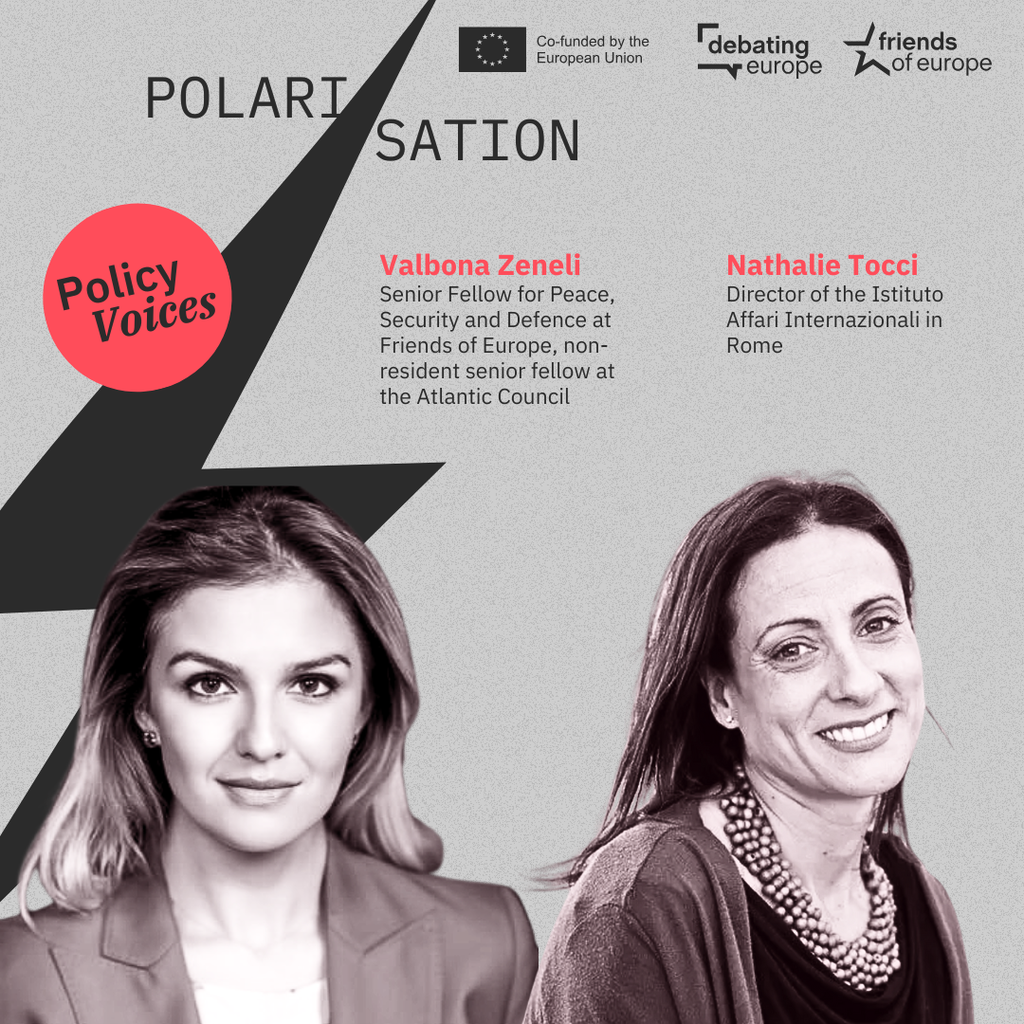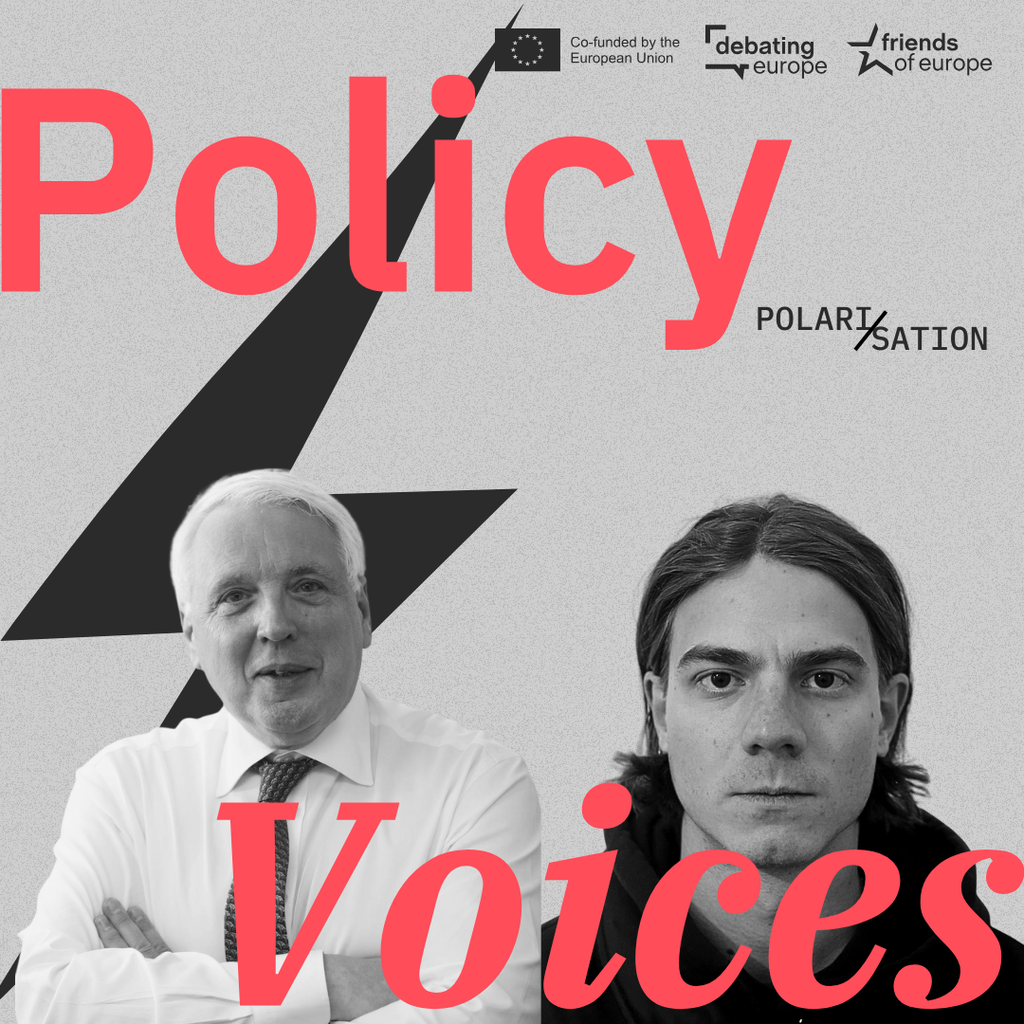From ambition to action: building Europe’s Defence Union
Past event In person

- Area of Expertise
- Peace, Security & Defence
Peace, Security & Defence

Senior Advisor at Defend Democracy, Lecturer at the Institute for Security Governance and former Senior Fellow at Friends of Europe.
In past wars people often felt powerless, reading newspapers or watching on television as events unfolded far away. But as we are seeing now in this new era of hyper-empowered citizens and private actors, they no longer must sit and watch. Now they can have very real influence on events and possibly even shape their outcomes.
Having taught seminars and conducted exercises on whole-of-society responses for years, we’ve known for some time that governments and institutions no longer have a monopoly on shaping outcomes. But I could never imagine the breadth and depth of the global whole-of-society response we are seeing right now in the wake of Russia’s invasion of Ukraine.
This global whole-of-society response began even before the first Russian tank rolled through the border gates and has grown in its size and impact ever since this new phase of the invasion began 23 days ago.
In the 2021 Friends of Europe hybrid tabletop exercise we identified the concept of ‘information first responders’ and in late February of 2022, we already saw hundreds of citizens and civil society groups debunking Russian disinformation by looking at the embedded geolocation and time data on videos or finding out they were just old footage from past conflicts elsewhere.
They are taking these actions quickly and sharing them on social media where they are shared well beyond their own personal networks. Governments and media companies are also working to debunk disinformation but the private and civil society actors have been much faster and more responsive.
We’ve also seen the availability of photos on social media, TikTok videos, and quality overhead imagery from private firms like Maxar be put to use by former intelligence analysts with the training and experience to analyse the information rapidly and turn them into reports to be used not only by the Ukrainian authorities but by journalists and citizens worldwide.
The size and technical capacities of this volunteer cyber effort are enormous
It’s remarkable that the Wikipedia Ukraine situation map is on par with the accuracy of situation maps produced by advanced governments’ military and intelligence services.
There are even individuals and civil society groups that are already collecting and cataloguing data on potential war crimes.
One whole-of-society effort that has received much attention already is the hacktivist army assisting Ukraine in this war, drawing cyber experts and hackers from all over the world – even including Russia.
The call from the Ukrainian digital ministry drew 170,000 volunteers in the first week and there are now over 300,000 persons on the dark web and the group’s Telegram channel to coordinate attacks to interfere with Russia’s ability to continue its attack on Ukraine.
While of course government actors remain active in the cyberwar, the widespread use of proxies has also proven to be a vulnerability for Russia as many of their own proxies have changed sides in the past three weeks.
Some cyber activists have even been tracking Russian troop movements by the digital footprints left by their soldiers as they download or play music on popular shared platforms.
The size and technical capacities of this volunteer cyber effort are enormous. In the words of one hacktivist involved in this effort: “This much cyber power is hard for any state to stand up against. They are doing everything they can and nothing is unhackable.”
As powerful as moral motivations can be, they can also be manipulated by disinformation
In addition, we are seeing individuals donating to the Ukrainian military and companies donating equipment. There are also online activists seeking to reach the Russian people to tell them what is happening in their name.
For example, a Norwegian computer expert created a website to enable persons to send an email about the war in Ukraine to up to 150 Russian email addresses at a time. This effort is estimated to reach almost 22mn Russian citizens in the coming weeks.
In other cases, information activists are reaching Russian citizens by posting similar messages in the online reviews of restaurants all over Russia.
So while the kinetic war rages on in Ukraine, this global whole-of-society swarm is acting like a pack of white blood cells attacking a virus in a human body – coming after anything connected to the Russian government and their forces. These actors move with lightning speed in just hours, while governments and institutions may need entire days to coordinate their response.
And true to the principle of whole-of-society approaches, these actions are happening outside of any official hierarchy. Instead, these individuals, civil society groups and companies are motivated by a combination of moral outrage and moral obligation – with moral leadership in this case is coming from Ukraine’s President Zelensky.
As powerful as moral motivations can be, they can also be manipulated by disinformation, potentially turning a swarm of private and civil society actors against our own institutions – as we saw in the 6 January 2021 attack on the United States Capitol, the attempted storming of the Bundestag in August 2020, or the numerous attacks on vaccine centres in Europe during the pandemic.
Is it time for a Geneva Convention for the information sphere?
But the first disinformation danger the current global whole-of-society ‘swarm’ should expect are information manipulations designed to degrade and strip away Ukraine and Zelensky’s moral leadership in much the same way Russian disinformation actors went after the White Helmets in Syria.
We can also expect to see the possible use of a deep fake which could depict Zelensky agreeing to a peace deal or surrendering, sowing confusion among Ukraine’s defenders at home and its helpers abroad. A cheap fake of this type was already attempted during this past week.
Nonetheless, this new phenomenon of a highly effective global whole-of-society effort and the danger of it being manipulated by disinformation becomes all the more apparent when we consider the future arrival of augmented reality, virtual reality, and AI-enabled infobots and their ability to influence our societies.
In this emerging era in which almost every citizen will carry an electronic sword, we must ask ourselves, is it time for a Geneva Convention for the information sphere?
Of course there will be numerous legal and ethical challenges to such an accord but just because it’s difficult does not mean we should not try.
Finally, we need a similar global whole-of-society response to help the millions of war refugees fleeing from Ukraine into the rest of Europe. We are already seeing good indications of this is happening but we’ll need to ensure that the depth and intensity of our support is just as strong and enduring as it has been for Ukraine’s war effort.
Past event In person

Next event In person & Livestreamed

Past event Online

Past event Online





Stay informed
We use cookies and similar technologies to adjust your preferences, analyze traffic and measure the effectiveness of our campaigns. Learn more about our privacy policy.